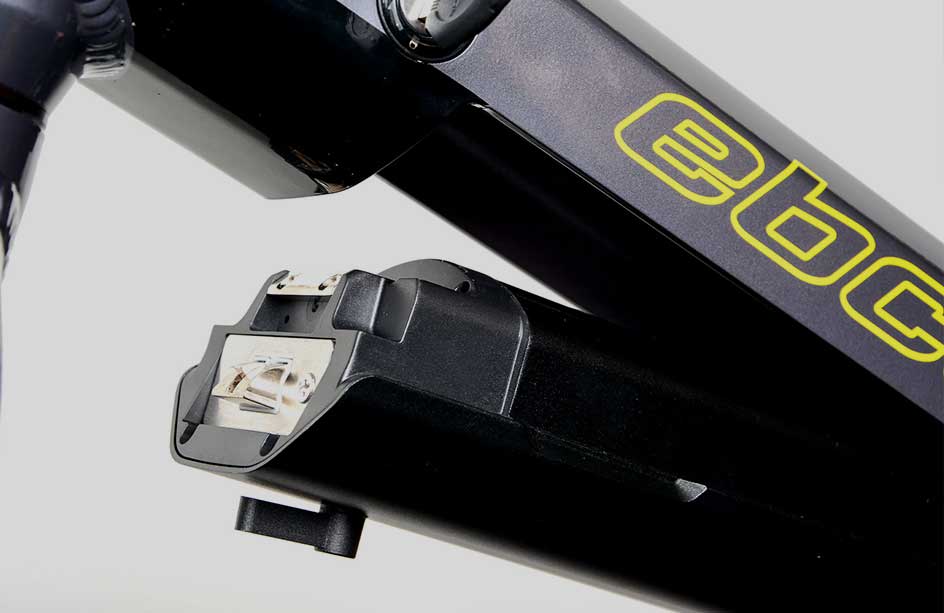Are eBike Batteries Safe?

Yes! eBike batteries pose no greater risk than common everyday household electronics. eBike batteries undergo stringent quality control measures, ensuring they meet or exceed safety standards akin to those governing your laptop and mobile phone.
Electric bikes, commonly known as eBikes, have gained immense popularity in recent years. As more and more people embrace the benefits of this eco-friendly mode of transport, questions about the safety of eBike batteries have naturally surfaced. The media keeps reporting of bikes catching fire, sparking concerns among riders and enthusiasts alike.
In this blog post, we will address the common concerns surrounding eBike batteries and provide you with the assurance you need to hit the road confidently.
Explosions and Fire Hazards
One of the main concerns people have is the fear of eBike batteries exploding or catching fire. While these incidents are extremely rare (according to a study by the National Highway Traffic Safety Administration, incidents of eBike battery explosions or fires are exceedingly rare) it’s essential to understand that eBike batteries are equipped with advanced safety features. These features include temperature sensors, overcharge protection, and thermal management systems that manage and regulate the battery’s temperature to prevent any mishaps. Additionally, the Battery Management System (BMS) plays a crucial role in ensuring the safe operation of eBike batteries by monitoring cell voltage, temperature, and overall battery health, thus providing an extra layer of protection and peace of mind for riders.
Reliability
Skepticism often arises around the reliability of eBike batteries to hold a charge and function optimally. Modern eBike batteries utilize high-quality lithium-ion technology, offering long-lasting performance and excellent reliability. According to a report by the Bike Association (EBA), out of millions of eBikes sold worldwide, the incidence rate of battery-related accidents is less than 0.1%. Of course, it’s crucial to follow the manufacturer’s guidelines for charging and storing the battery properly to prolong its lifespan.
Leakage and Toxicity
Concerns related to battery leakage and the potential toxicity of eBike batteries have been circulating. However, it’s important to note that most eBike batteries are sealed and designed to prevent leakage. These batteries undergo stringent testing and meet IP (Ingress Protection) ratings, ensuring that they are generally waterproof. This means that they have not only the highest level of dust protection but can also withstand exposure to rain or splashes without compromising their functionality or safety. Nevertheless, you should never submerge the battery in water or prolonged exposure to extreme weather conditions to maintain its optimal performance and longevity.
Charging Safety
Ensuring safe charging practices is crucial for maintaining the longevity and safety of eBike batteries. Here are some essential tips:
- Use the Manufacturer’s Provided Charger: always use the charger provided by the eBike manufacturer to avoid compatibility issues and ensure safe charging.
- Avoid Charging in Extreme Temperatures: charge eBike batteries in environments with temperatures ranging between 50°F to 85°F (10°C to 30°C) to prevent damage and ensure optimal performance.
- Don’t Leave the Battery Charging Unattended: while modern chargers have safety features, it’s best not to leave the battery charging unattended for extended periods to mitigate risks associated with unexpected events.
- Charge in a Well-Ventilated Area: ensure the charging area is well-ventilated to dissipate heat generated during charging, minimizing the risk of overheating.
- Monitor Charging Progress: periodically check the charging progress and inspect the battery for any signs of damage or unusual behaviour.
- Unplug After Fully Charged: disconnect the charger from the power outlet and battery once the battery is fully charged to prevent overcharging.
- Inspect Charger and Cable Regularly: routinely inspect the charger and charging cable for wear or damage, replacing them immediately if necessary.
- Charge in a dry environment: only charge an eBike battery indoors or under cover in a dry environment, the charger and the battery should never be exposed to water.
How to ensure Battery Safety
- Choose Reliable Brands
Purchasing eBikes and batteries from reputable and trustworthy manufacturers like EBCO or Corratec ensures that you receive quality products that meet rigorous safety standards. - Follow Manufacturer Guidelines
Follow the manufacturer’s guidelines for charging, handling and storing eBike batteries to ensure safety, longevity and warranty compliance.
Conclusion
eBike batteries are generally safe when used correctly and purchased from reliable manufacturers. While concerns about battery safety are understandable, it is essential to separate fact from fiction. By dispelling common myths and following the manufacturer’s guidelines, you can confidently enjoy the benefits of eBike technology and embark on thrilling journeys with peace of mind. Remember, properly maintaining and taking care of your eBike battery is crucial for its optimal performance and longevity. So, hop on your eBike, explore the outdoors, and embrace the future of sustainable transportation!




